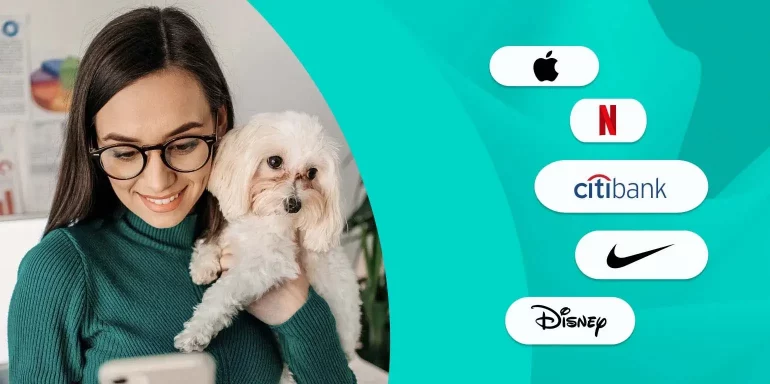No matter how much you tout the greatness of your product or service, that alone won’t guarantee success. In the consumer marketplace, you must also establish a unique, memorable, trustworthy profile by capturing consumers’ attention and building a long-lasting relationship with them. The key to accomplishing this is brand advertising.
What is brand advertising?
Brand advertising is a form of advertising which helps establish connections and build strong, long-term relationships with consumers over time.
Companies that use brand advertising aim to get long-term positive recognition. These companies establish brand identity, credibility, and loyalty with their prospects intellectually and emotionally.
Which form of advertising influence demand for a specific brand?
Two primary types of advertising exist: brand advertising and direct response advertising.
Direct response ads (or performance-based ads) are used to drive immediate action from users, while demand advertising is designed to increase overall primary demand for a brand.
Direct response ads — which includes most (but not all) forms of digital advertising — allow advertisers to easily track and measure the performance of their campaigns with links, unique phone numbers, app installs, coupon codes, and more. Although they require a lot of analysis and A/B testing, they typically offer more performance insight, higher conversion rates, and better ROI. In addition, advertisers generally only pay for direct response ads when the required action is fulfilled, and not when the ad is viewed.
Brand ads — most of the ads on TV, radio, billboards, newspapers, magazines, etc. — don’t necessarily involve asking users to perform a specific action and, therefore, are harder to track. However, it’s not impossible to track brand advertising campaigns.
Think about display ads, or retargeting ads. These aren’t meant so much for click-throughs and encourage in-the-moment actions. Rather, these are more focused on impressions and reach — putting your brand in front of people so they remember it later. This is the overall goal of brand advertising: getting in front of users’ eyes, making a favorable impression, building strong connections, and increasing demand for the brand over time.
How does brand advertising add value to a brand?
Even without easy tracking and measurability, brand advertising campaigns still add tremendous value. With more consumers aware of your brand, the more they trust and stick with you throughout the buyer’s journey. This makes them more likely to take action when they see a performance-based ad (and even become a loyal customer) in the future:
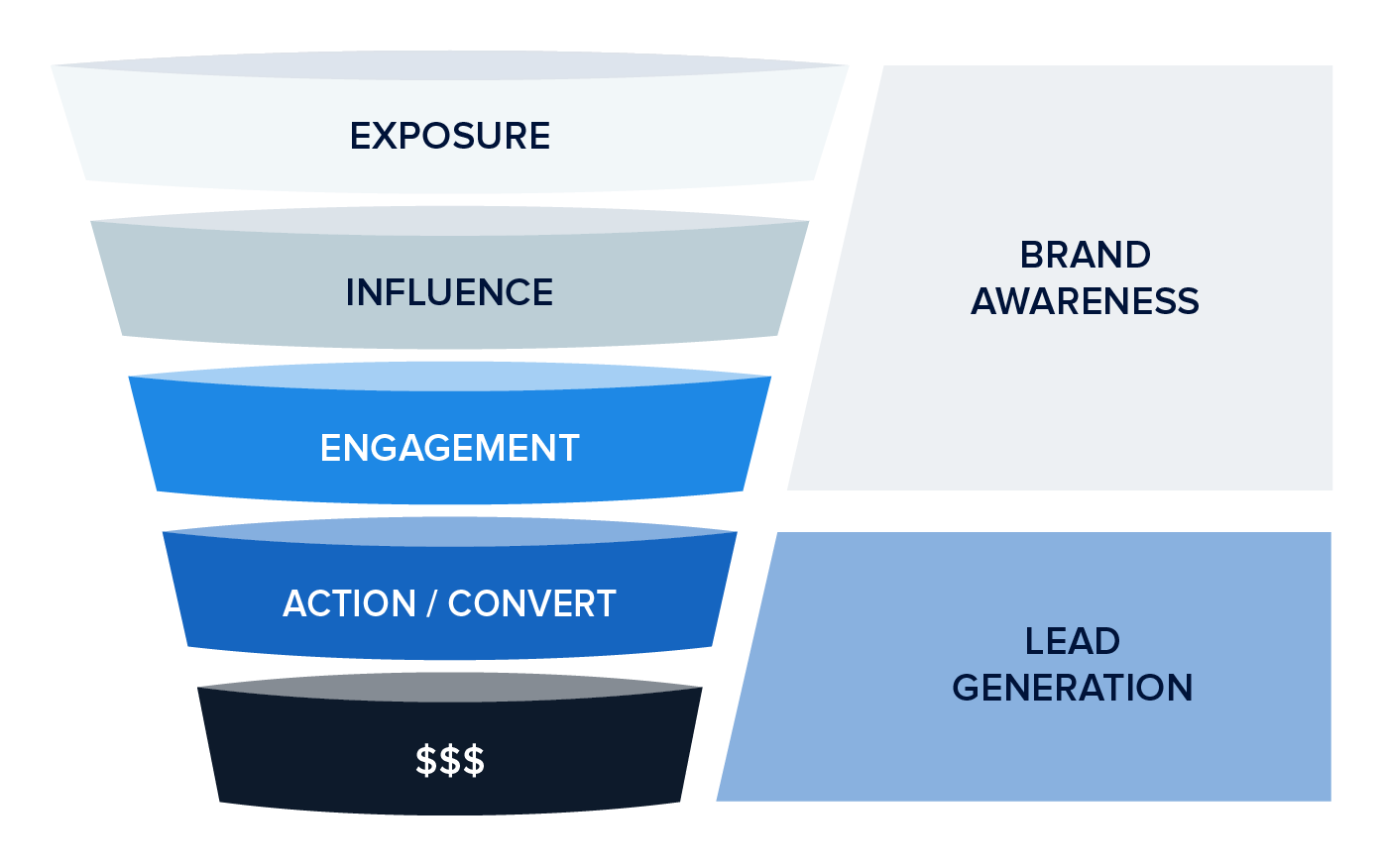
Let’s take a look how brand advertising adds value to a brand during each of the beginning stages of the funnel.
Exposure: Establishes brand identity
During the exposure stage, it’s crucial to deliver a great first impression to establish a strong, positive, consistent brand identity (aka character or personality). The Brand identity determine a variety of components: the brand’s logo, fonts and colors, web presence, and other visual elements.
These elements say a lot about the brand. A serious, corporate brand (such as a legal or finance company) is likely to have a more professional brand identity — portrayed through a plain logo, basic fonts, simple web presence, etc. Citibank, for example:
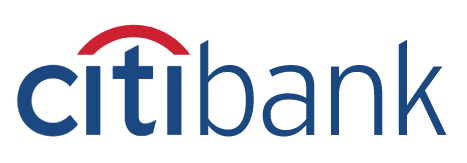
Conversely, a more playful logo, font, and web presence is more suitable for a lighthearted, recreational company, such as a family restaurant or board game company, like Hasbro:
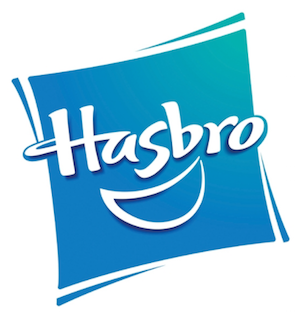
Some brands have developed such a strong identity that people recognize them without even requiring the brand name. Chances are, you know what companies these logos belong to without any additional context:

Nike’s swoosh, Twitter’s bird, and Apple’s bitten apple have become so synonymous with their corresponding brands that they don’t even include their brand names anymore, and people can still readily recognize them.
The same is true with fonts. Look at Disney’s iconic font:
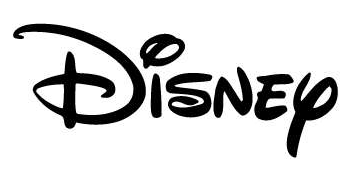
Even without spelling out “Disney”, the font style is easily recognizable:

Influence: Ensures brand credibility
Customers are more likely to buy from brands they trust, and effective brand advertising inspires trust and builds credibility. One way to do this is to portray your brand as an industry leader to outperform competitors.
For example:
- Launching branded campaigns in which industry/company experts offer their knowledge and advice
- Paying to sponsor community events
- Hosting charities for causes relevant to your business — natural disaster, wildlife and environment, disease and disorder, medical research, human rights, school reform, etc.
All of these methods can help create positive news and recognition for your brand, which helps boost brand trust and credibility.
Engagement: Builds strong connections with prospects
The best brand ads are those that offer solutions and help build strong connections with prospects. In addition to making intellectual sense. These ads must also make emotional sense to encourage meaningful communication and engagement. If people feel they can’t communicate and form a personal relationship with your brand, they will likely forget about you.
Two essential components can help you engage your target audience in a positive, relevant way:
- Catchy slogans, such as McDonalds’ “I’m lovin’ it,” Wheaties’ “Breakfast of Champions,” Nike’s “Just do it,” Campbell’s “Mm mm good”
- Memorable spokespersons, such as the Monopoly Man, Mr. Peanut, the Geico Gecko, Michelin Man, Tony the Tiger, Kool-Aid Man, Jolly Green Giant, the Pillsbury Doughboy
When used in brand ads, both of these components make it easier for prospects to remember your brand, connect, and buy into your brand’s story.
Brand advertising examples
Here’s a quick look at some digital marketing brand ads.
First, a Walgreens video ad displayed on Today’s homepage that promotes Red Nose Day — a charity to help end child poverty. The Walgreens logo is displayed for brand identity. And the charity promotion itself (as well as “trusted since 1901”) helps build brand credibility:
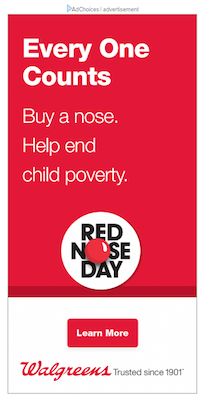
Next is a Dodge video banner ad that was shown at the top of a Kelley Blue Book blog article. Rather than trying to influence a specific action or sale. This brand advertisement is Dodge’s way of getting its name and the 2018 Charger in front of a relevant audience:

Lastly, this pop-up display ad on the Ronald McDonald House Charities homepage promotes a marathon in Chicago:

Bank of America and Chicago Marathon helped sponsor this event, so their logos are visible alongside the RMCH logo.
Add brand advertising to your marketing strategy
Failing to incorporate brand advertising into your overall marketing strategy could be detrimental to your bottom line. Brand advertising may be considered the long game compared to direct response ads. But a well-executed strategy can pay off in more ways than one.
By combining brand ads and with direct response, your brand can capture both immediate ROAS while also driving future sales. Use the suggestions and examples above to refine your own strategy. Sign up for an Instapage 14-day free trial today.

Try the world's most advanced landing page platform with a risk-free trial.
